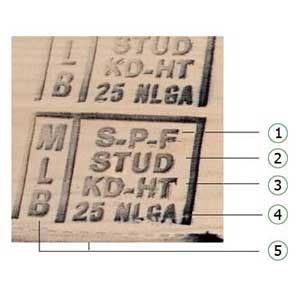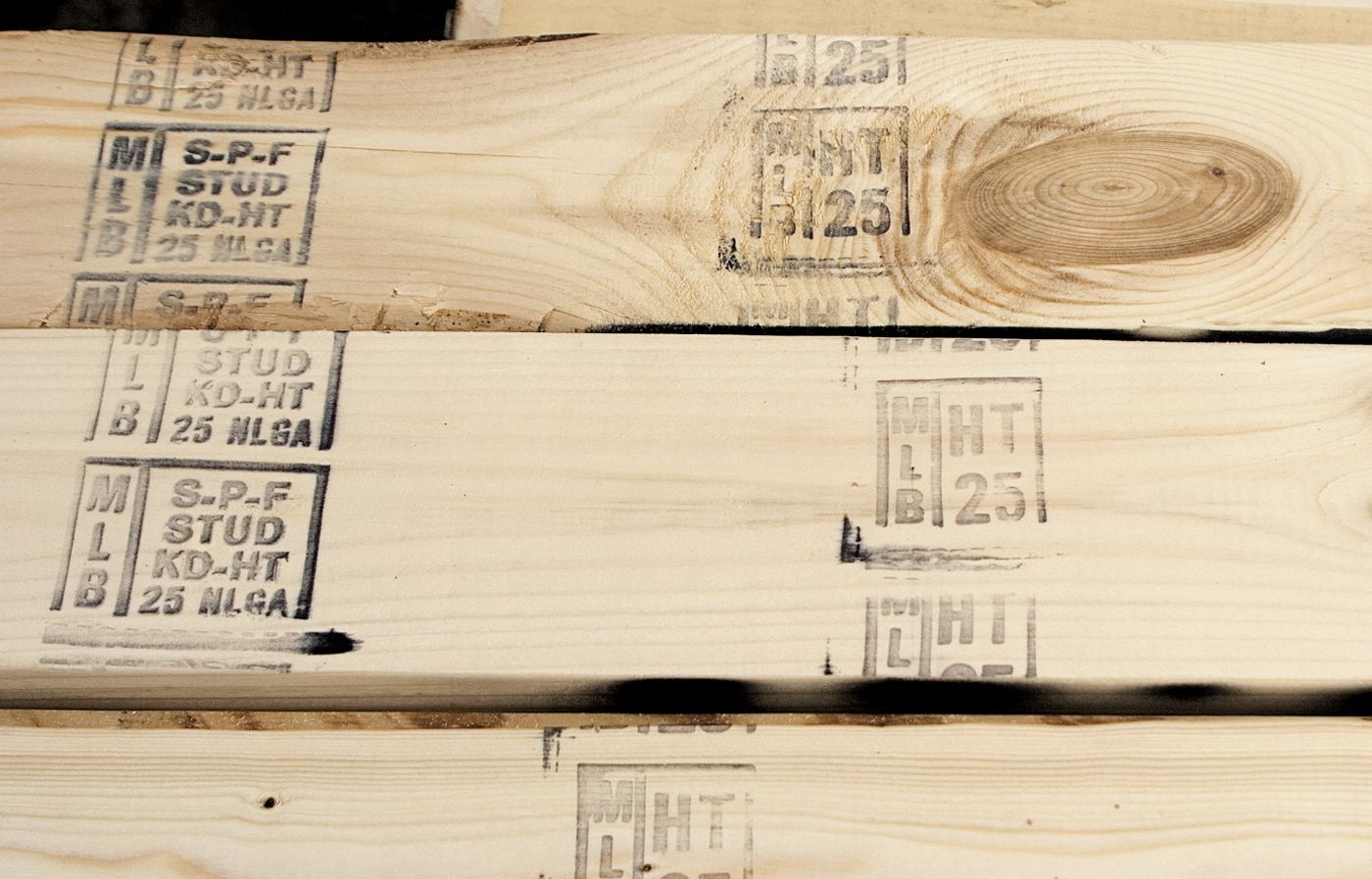Choosing the right lumber for a project can make all the difference. Every piece of framing lumber has a grade stamp, which provides information about its quality, strength, and characteristics. Learning to read these stamps helps ensure you meet building codes and get good value for your money. Here’s a guide to understanding lumber-grade stamps and how to use this knowledge in your projects.
What Is a Lumber Grade Stamp?
A lumber grade stamp is a small mark found on each piece of lumber that serves as a quality assurance measure. It tells you the wood has been inspected and meets standards for strength and stiffness. The stamp provides information on species, grade, moisture content, and origin.
Lumber is a natural material, so it has inherent variations. There’s always the chance that framing lumber will have some natural defect, such as a large knot or a long split, that can reduce its overall strength. The grade stamp helps builders and DIY enthusiasts identify suitable lumber for their needs.
The 5 Key Components of a Lumber Grade Stamp
Every lumber-grade stamp contains the following information:
- Species: This tells you the type of wood or a group of species with similar strengths. Some species, like Southern pine and Douglas fir, are known for their structural strength.
- Grade: Based on a visual inspection, this ranks the wood’s quality. Higher grades, such as Select Structural, are used when both appearance and strength matter. Lower grades are suitable for non-structural applications.
- Moisture content: This shows how much water is in the wood when it’s graded. Lumber with less moisture is more stable and less likely to warp.
- Certification: The agency overseeing the grading process is identified here, ensuring industry standards are met.
- Mill information: This tells you where the wood came from, which is useful for tracing if there are quality issues.

Decoding the Lumber Species Abbreviations
It’s important to understand species abbreviations when choosing the right wood for your project. Here are some common framing-grade softwood abbreviations, from strongest to weakest:
- Doug Fir, D Fir-L: Douglas fir
- SYP: Southern pine
- Hem, Hem-fir, H-F: Hemlock or fir
- S-P-F: Spruce, pine, or fir
Lumber Grades Explained
Knowing the grade of lumber helps you decide what’s a good choice for your project.
Select Structural
Select Structural is the highest grade and offers superior strength and appearance. This grade is often used for demanding applications where both performance and aesthetics are important. It’s ideal for visible structural elements and high-stress areas where reliability is needed.
No. 1, No. 2, and No. 3
As the grade numbers increase from one to three, the quality and price of the lumber decrease. No. 1 lumber offers good strength and appearance, while No. 2 provides a balance of quality and affordability. No. 3 lumber is the lowest grade but can still be good for many applications where appearance is less important. Each grade has specific tolerances for knots, splits, and other defects, which impact the wood’s aesthetic and structural qualities.
The ‘Stud’ Designation
The “Stud” designation indicates that the lumber is suitable for use in load-bearing walls. This grade ensures that the wood meets specific strength requirements for vertical support applications.
Moisture Content and Its Impact on Lumber
The moisture content of lumber can affect its performance and stability. Understanding the moisture content designations can help you avoid potential problems like warping and cracking.
Green vs. Kiln-Dried Lumber
Green lumber, labeled as air-dried (AD) or surface-green (S-GRN), has a moisture content of 19% or more. While less expensive, it can move unpredictably as it dries. Kiln-dried (KD) or surface-dry (S-DRY) lumber has a moisture content between 16% and 19% and offers more stability. The drying process helps reduce the risk of future warping and splitting, leading to a more stable finished product.
Choosing the Right Moisture Content for Your Project
This Old House general contractor Tom Silva saves money by ordering S-GRN wood when framing a new house, figuring that all the wood will air dry at the same pace. In an existing house where the framing is already dry, he uses more stable and more costly KD lumber, or even MC-15 lumber, which has a moisture content of 15% or less.
How To Read a Lumber-Grade Stamp Like a Pro
Reading a lumber-grade stamp is straightforward once you know what to look for. Here’s a step-by-step approach:
- Identify the species abbreviation.
- Check the grade classification.
- Note the moisture content indicator.
- Look for the certification mark.
- Find the mill information.
Common Mistakes To Avoid
When reading lumber-grade stamps, avoid these pitfalls:
- Confusing species abbreviations
- Overlooking moisture content indicators
- Ignoring the grade classification
- Misinterpreting certification marks
- Failing to consider the relationship between grade and intended use
Lumber Grade Stamps and Building Codes
Building codes often specify the grade of lumber required for construction projects. Check your local codes to ensure compliance. In complex projects, consult with a contractor or engineer to make sure you’re using the right lumber. Professional guidance can prevent costly mistakes and ensure the structural integrity of your project.
Maximizing Value: Choosing the Right Lumber for Your Project
While higher-grade lumber offers superior strength and appearance, it also comes at a higher price. Keep these tips in mind when buying lumber:
- Inspect each piece for visible defects.
- Check for straightness and warping.
- Look for a mix of grades within a stack.
Understanding lumber-grade stamps is valuable for anyone working on construction or woodworking projects. These small stamps provide big clues about a piece of wood’s strength, moisture content, and origin. By learning to read them, you can make informed choices, stay within budget, and avoid mistakes.

